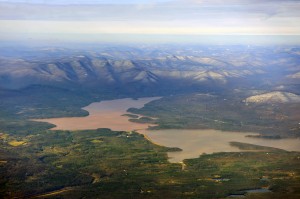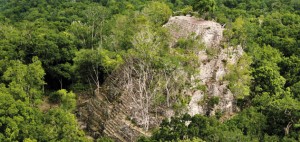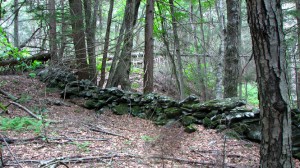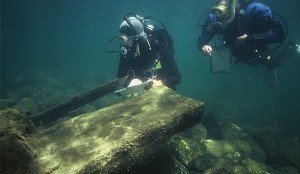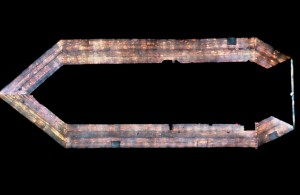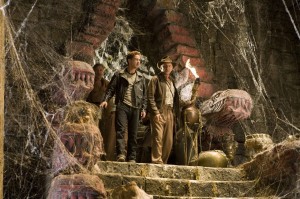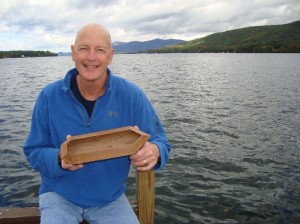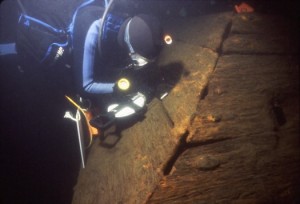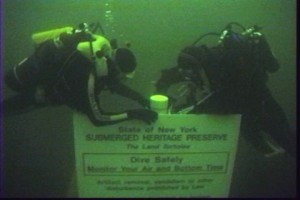Acorn Hill, Catskills Mountains
Through a hole in the fence we entered the wilderness. With countless fallen tree branches and slippery mossy stones jutting out the ground, we needed to be as swift as a deer to jump over the obstacles. It is a paradox that we could not really act like a deer, because the nearby hunters thinking we were deers might mistakenly shoot us. This trek fitted perfectly with a stereotype regarding to archaeology–archaeologists are always accompanied by mysterious forests, poisonous bugs, and hands full of dirt. We were in a forest, we had dirty hands, but no bugs, if frogs did not count, probably because we all had sprayed ourselves before. However, the excitement of going on my very first real field trip dissipated all the concerns and made me enjoy it.
Askohan Reservoir in the Catskills Mountains, lying ninety-three miles north of New York City, was completed in 1915 to provide clean water for the city. While water was transporting through ninety-two miles long aquaducts to slake the thirst of New York City, eleven towns and thousands of arces of farmlands were vanished underwater. Hoping to know how the construction of Askohan Reservoir affected local people’s lives and reshaped rural landscapes, we were here.
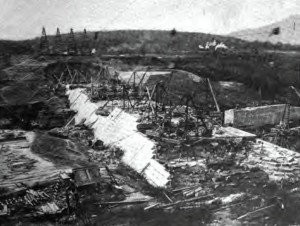
Olivebridge Dam under construction to build the Ashokan Reservoir circa 1910.
Finally, we reached the site marked by a washing machine in 1940s, and spilt into three groups to start working. Two groups were dealing with a sampling unit, with each of the three members in a group responsible for different jobs, describing the artifacts, writing down the descriptions, and drawing pictures in the notebook. Instead of staying motionless beside the unit, my group with Dr. Beisaw walked around to gain a better understanding of the adjacent area. There were several piles of stones not far away, on which scattered all kinds of glass, ceramics, metal cans and even shoes. According to Dr. Beisaw, these piles of stones were remains of houses of domestic people, while the bigger piles of soil to the right were industrial records of the exploitation of bluestone in quarry for the construction of the dam over the reservoir. Moving on, we were amazed by a huge man-made platform of stone about six feet high, because there used to be a entire mountain of stone over fifty feet, which completely disappeared after being quarried. At last, we drew a simple map of the area near the sampling unit and highlighted the piles of stone and soil, road and quarry.
During the field trip, what I enjoyed the most is to listen to the stories of every artifact, feature, and ecofact I encountered. They are alive. Trees were not only trees. Their composition and postion suggested that this was a farmland before being abandoned. Stones were not only stones. Their size and shape showed that some were walls to mark the rim of the farmland, some were to support domestic houses. The miscellany of artifacts told a more comprehensive story. Dining ceramics and a metal pan embodied that people were cooking on their own and eating near the quarry. Perfume and nail polish bottles manifested that some people here were in families. Archaeologists cherish the information more than the value in artifacts, because with information, they can reconstruct the past society. Even when you took a piece of gold to an archaeologist, the typical answer would be, according to Dr. Beisaw, “Gold? So what? Give me information!”
______________________________
Search result of Ashokan Reservoir, http://en.wikipedia.org/wiki/Ashokan_Reservoir
A.J.Loftin, The Ashokan Reservoir: The creation of the Ashokan Reservoir changed the Catskills forever, http://www.hvmag.com/Hudson-Valley-Magazine/August-2008/History-The-Ashokan-Reservoir/
Image 2: http://en.wikipedia.org/wiki/File:Olivebridge_Dam_Under_Construction.jpg
Imagej3j:http://commons.wikimedia.org/wiki/File:Ashokan_Reservoir_from_Monument_Road_3.JPG


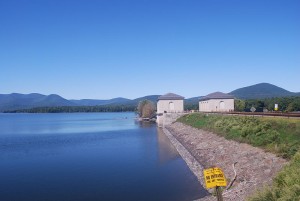
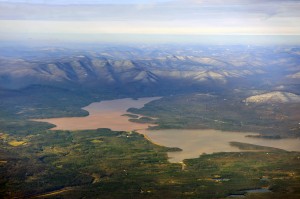

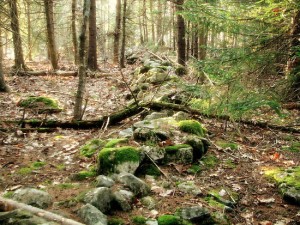
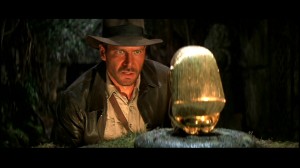
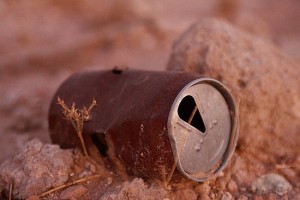
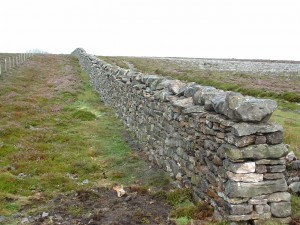
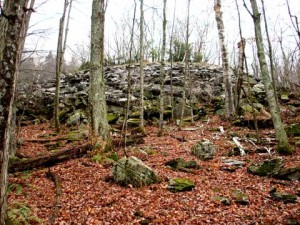
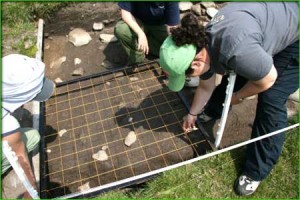
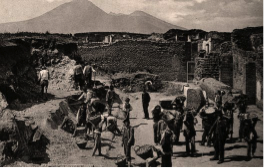
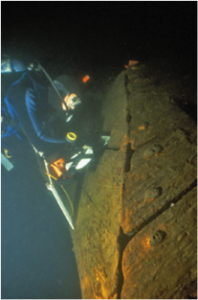
 This photo illustrates this pretty well. See how the ground on the far side of the wall is lumpier, rockier, and has bigger trees, while the ground closest to the camera is flatter and has fewer rocks and smaller trees? That flatter ground was probably a field.
This photo illustrates this pretty well. See how the ground on the far side of the wall is lumpier, rockier, and has bigger trees, while the ground closest to the camera is flatter and has fewer rocks and smaller trees? That flatter ground was probably a field.
 A tree in a pasture vs. trees in a forest. Note the differences in shape and number of low-lying branches.
A tree in a pasture vs. trees in a forest. Note the differences in shape and number of low-lying branches.